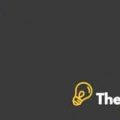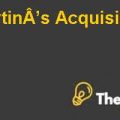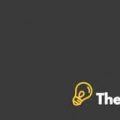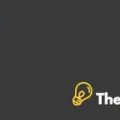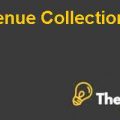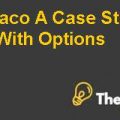
Suggestions to the Executive Team to Improve the Profitability
Analysis of cost structure, activities and cost drivers reveals that sales representatives entertain sales order of only one category of customers and sales representative, who entertains pharmacy customers process 4,000 orders per representative; whereas, sales representatives take care of grocery customers by processing 1,000 sales orders per representative, which shows that representatives who serve grocery customers are underutilized; therefore, executive is suggested to decrease the number of sale representatives and train each representative so that he can process orders of any category of customers and in this way executive team can cut selling cost in order to improve profitability.
Moreover, shipping cost is very much high for both pharmacy category customers and grocery customers, meanwhile, number of deliveries are higher than the number of sale orders placed; which means that order are being delivered in partial deliveries that increase the cost of shipping. Therefore, management should take initiatives to decrease number of sales orders and number of deliveries and in order to do this, the management can offer discounts to customers for large orders and deliveries should be shipped as per sales orders.
Furthermore, activity based costing system reveals that pharmacy category customers are making losses but straight away abandonment of pharmacy category is not a suitable option because currently pharmacy category is generating contribution of $11.76 million and total overheads allocated to pharmacy category using activity based costing system is amounted to $17.58 million; therefore, abandonment of pharmacy category customers will increase overall losses from $5.812 million to $11.76 million. Meanwhile, more detailed analysis of cost structure reveals that sales representative’s cost of $2.88 million can be avoided if a decision to abandon pharmacy category is taken but still it will not eliminate overall losses. Therefore, executive management should not abandon its sales to pharmacy customers but it should focus on cost reduction strategies as suggested above in order to increase profitability.
EXHIBIT
Estimated Use of Labor Hours |
||||
| Estimated Use of Labor Hours |
32,000 |
32,000 |
32,000 |
32,000 |
| Number of Units Produced |
200,000 |
200,000 |
200,000 |
200,000 |
| Number of Units Sold |
150,000 |
160,000 |
170,000 |
180,000 |
| Total Overheads |
(4,000,000) |
(4,000,000) |
(4,000,000) |
(4,000,000) |
| Pre-Determined Overhead Rate |
(125) |
(125) |
(125) |
(125) |
| Revenue |
9,000,000 |
9,600,000 |
10,200,000 |
10,800,000 |
| Conversion Cost |
(2,250,000) |
(2,400,000) |
(2,550,000) |
(2,700,000) |
| Applied Overhead |
(3,750,000) |
(4,000,000) |
(4,250,000) |
(4,500,000) |
| Gross Margin |
3,000,000 |
3,200,000 |
3,400,000 |
3,600,000 |
| Under/Over-Applied MOH |
(250,000) |
- |
250,000 |
500,000 |
| Selling & Administrative Expenses |
(2,700,000) |
(2,700,000) |
(2,700,000) |
(2,700,000) |
| Pre-tax Operating Income |
50,000 |
500,000 |
950,000 |
1,400,000 |
| Expected Capacity of Hours | ||||
| Expected Capacity |
40,000 |
40,000 |
40,000 |
40,000 |
| Number of Units Produced |
200,000 |
200,000 |
200,000 |
200,000 |
| Number of Units Sold |
150,000 |
160,000 |
170,000 |
180,000 |
| Total Overheads |
4,000,000 |
4,000,000 |
4,000,000 |
4,000,000 |
| Pre-Determined Overhead Rate |
100 |
100 |
100 |
100 |
| Revenue |
9,000,000 |
9,600,000 |
10,200,000 |
10,800,000 |
| Conversion Cost |
(2,250,000) |
(2,400,000) |
(2,550,000) |
(2,700,000) |
| Applied Overhead |
(3,000,000) |
(3,200,000) |
(3,400,000) |
(3,600,000) |
| Gross Margin |
3,750,000 |
4,000,000 |
4,250,000 |
4,500,000 |
| Selling & Administrative Expenses |
(2,700,000) |
(2,700,000) |
(2,700,000) |
(2,700,000) |
| Pre-tax Operating Income |
1,050,000 |
1,300,000 |
1,550,000 |
1,800,000 |
| Profitability Analysis Using Activity-Based Costing Techniques | ||||
| Customer Types |
Pharmacy |
Grocery |
Herbal Therapist |
Total |
| Revenue |
25,514,800 |
49,399,400 |
16,085,800 |
91,000,000 |
| Cost of Goods Sold |
13,755,008 |
30,140,662 |
10,780,530 |
54,676,200 |
| Gross Margin |
11,759,792 |
19,258,738 |
5,305,270 |
36,323,800 |
| Gross Margin percentage |
46.10% |
39.00% |
33.00% |
39.90% |
| Operating Costs: | ||||
| Operating Cost | ||||
| Sales Representatives |
2,884,000 |
721,000 |
- |
3,605,000 |
| Sales Account Managers |
- |
720,000 |
- |
720,000 |
| Telephone order system |
73,239 |
54,930 |
1,831 |
130,000 |
| Sales Administration |
252,632 |
189,474 |
37,895 |
480,000 |
|
3,209,871 |
1,685,403 |
39,726 |
4,935,000 |
|
| Marketing Costs | ||||
| Promotions & Incentives |
990,000 |
1,260,000 |
- |
2,250,000 |
| Advertising |
1,200,000 |
1,200,000 |
- |
2,400,000 |
| Catalogue Development |
- |
- |
250,000 |
250,000 |
| Marketing Management |
160,898 |
180,735 |
18,367 |
360,000 |
|
2,350,898 |
2,640,735 |
268,367 |
5,260,000 |
|
| Distribution Costs | ||||
| Company Trucks |
5,579,048 |
2,500,952 |
- |
8,080,000 |
| UPS Service |
- |
- |
1,930,296 |
1,930,296 |
|
5,579,048 |
2,500,952 |
1,930,296 |
10,010,296 |
|
| R&D Costs | ||||
| Supplements |
38,400 |
398,400 |
43,200 |
480,000 |
| Herbal Remedies |
36,000 |
244,800 |
439,200 |
720,000 |
|
74,400 |
643,200 |
482,400 |
1,200,000 |
|
| General & Administrative Costs |
6,361,538 |
1,060,256 |
848,205 |
8,270,000 |
| Total Operating Cost |
(17,575,755) |
(8,530,547) |
(3,568,994) |
(29,675,296) |
| Total Operating Income |
(5,815,963) |
10,728,191 |
1,736,276 |
6,648,504 |
| Return on Sales |
-22.79% |
21.72% |
10.79% |
7.31% |
...............................
This is just a sample partial case solution. Please place the order on the website to order your own originally done case solution.

